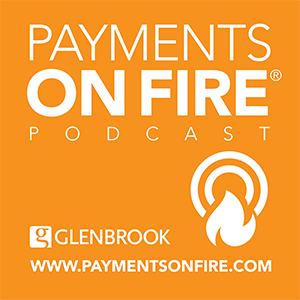At Glenbrook, we’ve been watching rising interest rates and vacillating economic conditions over the course of the year; while economists debate the likelihood of further rate hikes and the odds of a near-term recession, we dig into the real impact of these uncertain conditions on the U.S. payments landscape. Samantha Gordon joins us this month to discuss the implications to the consumer landscape. Regular editor Justin Pituch describes impacts on business spending. Let’s dive in.
On the consumer side, Goldman Sachs appears to be feeling the pain of rising interest rates and the consumer defaults that accompany them, as well. Goldman announced in their Q3 earnings call that they have (finally) found a buyer for GreenSky, the BNPL company focused on home-improvement loans that they acquired – somewhat disastrously – just two years ago. As Goldman has been learning over the last year, rising interest rates are not your friend if you’re running a BNPL business. In this scenario, BNPL lenders can find their already-slim margins caught between the proverbial rock and hard place: while the money that they lend out to consumers gets more expensive for Goldman to access, the consumers paying in installments – who are also feeling the impact of higher interest rates – are also increasingly likely to default. Goldman’s foray into various types of consumer finance has been on the rocks for a while now, but their most consistent, ongoing source of heartburn seems to be coming from their partnership with Apple to offer the Apple Card credit card and savings accounts; the partnership has contributed to over $1B in losses at the bank since 2020. We’re keeping our eye on this space to see what happens to the Apple Card next.
Consumer credit is a tough game in the current environment of high interest rates – especially for companies whose customers fall into the subprime cohort. We see more evidence of this with Discover, which reported higher-than-expected losses and a credit card net charge-off rate of 4.03%. To put that number in perspective, Discover’s net charge-off rate for credit cards was 1.92% for the same period last year – meaning that it grew by 211 basis points. Given Discover’s less affluent base of users compared to other credit card issuers, it’s not surprising that Discover might see losses before the rest of the market.
Discover might have good news coming, though, as they may stand to benefit if the Credit Card Competition Act – otherwise known as the Durbin-Marshall Credit Card Act – passes in Congress. As Points enthusiasts and payments nerds, we at Glenbrook love talking about what might happen if this regulation passes, but it seems pretty safe to say that Discover would be first in line to benefit from regulations that specifically target Visa and Mastercard, the leaders in the space. Despite all of the buzz this bill has generated recently, it hasn’t come up for a vote yet. More uncertainty in an already uncertain time!
Let’s flip over to the business side. Many B2B transactions are made on credit, either through negotiated credit terms or on credit or charge cards. As interest rates rise, so too does the cost of capital for businesses. While net investors benefit from rising rates, net debtors are feeling the pain. Savvy finance organizations look to their AP and AR departments to negotiate advantageous credit terms: buyers want to pay later and sellers want to get paid earlier. In addition to this more recent working capital pressure on businesses, we observe two longer-term trends in the space: the consumerization of B2B payments and the growing sophistication of SMB AP and AR software tools, allowing smaller organizations to emulate the sophistication of larger ones. We see these trends converging at this moment in a few different ways.
One is in the area of AI. Why? Manual processes can slow down the B2B payment process, leading to headaches for both parties. The pain is particularly pronounced on the seller side, since they want to be paid faster. One solution we are watching is Slope Pay, which recently raised $30M in a funding round joined by OpenAI’s Sam Altman. The company uses AI to improve reconciliation (a perennial problem in B2B payments) and risk modeling. We expect this kind of technology to proliferate and move from the enterprise space to SMB customers over time.
On the consumerization side, we note the expansion of BNPL offerings in the B2B space. This might seem slightly incongruous (“I thought BNPL was for shoes or watches”), but BNPL is actually well-suited to invoiced transactions made on credit in which the buyer literally buys now and pays later. It also helps explain why this could be an increasingly compelling area for BNPL providers even as the traditional consumer business case shows signs of weakness, as Samantha noted above. In October, we saw fintech provider Jifiti roll out a white labeled BNPL solution for banks, lenders, and sellers. That allows solution providers and their AR customers to easily support, scale, and manage payments on credit. It’s an idea that got a big boost even more recently, with Amazon expanding its partnership with Affirm to include B2B purchases. That’s exciting news for SMBs. In general, this is a tough time for businesses managing their working capital, but solution providers are stepping up to the plate to help deliver compelling solutions that make it easier to eliminate manual tasks and trade on credit.
We’d love to hear from you if you’re thinking about the effects of economic uncertainty for either consumers or businesses. Are you worried about the future or do you think today’s environment will inspire greater innovation? If you have thoughts or any other payments-related ideas you’d like to discuss, you can find us here. Otherwise, we look forward to seeing you next month.



